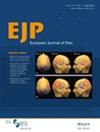Effect of limb position change on capsaicin-evoked pain: Evidence of interplays between the vascular and nociceptive systems?
Abstract
Background
This experiment aimed at confirming our incidental observation that, when capsaicin is applied on the volar forearm, raising the arm to a vertical position leads to a dramatic increase in capsaicin-evoked pain and to explore possible underlying mechanisms.
Methods
Twenty healthy volunteers received a 2% capsaicin patch on one forearm and a vehicle patch on the other. Patches were kept in place for 60 min. The perception caused by the patch was assessed repeatedly before, during and after patch application, both with the arm in horizontal resting position and raised vertically. In addition, capsaicin-induced secondary hyperalgesia was assessed using mechanical pinprick stimuli. Half of the participants were seated upright while the other half were lying supine, to assess whether the effect of limb position on capsaicin-evoked pain was due to gravity.
Results
After a few minutes of patch application, raising the capsaicin-treated arm (but not the vehicle-treated arm) led to a strong increase of the pain experienced at the patch. This effect of raising the arm did not differ between participants in the supine and seated groups and is therefore likely related to the position of the arm relative to the ground rather than to the body. Mechanical secondary hyperalgesia and the arm raising effect were strongly decorrelated at the last time point after patch removal, indicating different underlying mechanisms.
Conclusion
Our results indicate that capsaicin-evoked pain can be strongly modulated by limb posture and that this effect may be caused by an interplay between vascular and nociceptive systems.
Significance Statement
Capsaicin-evoked pain can be strongly modulated by limb posture and this effect may be caused by an interplay between vascular and nociceptive systems.

 求助内容:
求助内容: 应助结果提醒方式:
应助结果提醒方式:


